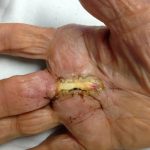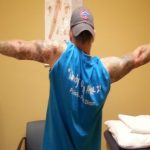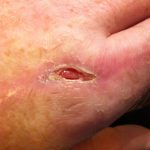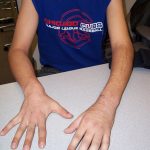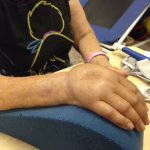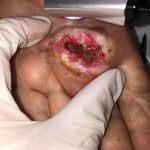Developing a hierarchical approach to solving difficult Upper extremity symptomology
This course will entirely focus on case presentations addressing different issues at various stages of pathology/injury to the upper extremity, rooted in the concepts of anatomy, pathophysiology and bio-mechanics. Treatment interventions will be formulated based on latest evidence based research and real world clinic- based practical applications. The attendees will develop an understanding of the evaluative process and on how to break down the various components of the assessment of a complex case. The attendees will develop an understanding on formulating a hierarchical treatment plan contingent on patient’s clinical presentation and assessment, which will include customized exercises based on knowledge of applied physics and designing appropriate splinting regimen during varied stages of injury based on tissue assessment and impairment.
Develop an understanding in identifying the presenting problem by understanding the complexity of anatomy and pathophysiology of the problem at handDevelop a thorough assessment plan by breaking down the evaluative process into sub-tasks to establish a more effective treatment plan that follows a hierarchical process of healingTreatment is tailor based on patients evaluative findings and presentation of the symptomology,This course will entirely focus on case presentations addressing different problems at varied stages of injuries rooted in our knowledge of Anatomy pathology and bio-mechanics. Treatment interventions will be formulated based on latest evidence based research and real world clinic based practical applications
CEU OFFERED: 12
COURSE OBJECTIVE:
The attendee will
1) Developing a hierarchical approach to solving difficult upper extremity symptomology.
2) Identifying the presenting problem through a thorough understanding of functional anatomy, pathophysiology and biomechanics of the upper quadrant.
3) Developing a thorough assessment plan by breaking down the evaluative process into sub-tasks to establish a more effective treatment plan that follows a hierarchical process of connective tissue healing
4) Developing treatment strategies that are tailor based on patients evaluative findings and presentation of the symptomology.
- The intervention will be derived from sound clinical reasoning and evidence based research
- Design customized exercises based on knowledge of applied physics .
- Design appropriate splinting during varied stages of injury based on tissue assessment and impairment.
KEY SPEAKERS:
- Saba Kamal – OTR, CHT
- Ashim Bakshi – MHS, OTR, CHT
OUTLINE /AGENDA
COURSES SIMILAR TO THESE AND NOT EXACTLY AS NOTATED BELOW MIGHT BE PRESENTED BASED ON TIME AND LATEST RESEARCH
Day 1
8:30 am – 9:45 am. Introduction. Principles and Pathophysiology of the healing tendon, bone and nerve- from theory to clinical applications. Principals that guide our treatment, critical thinking in devising tailor made treatment interventions based on diagnosis and surgical intervention
Apply reasoning and applied physics with splinting. Learn how joint mobilization and soft tissue mobilization assists in functional improvement
10:00 am to 12:30pm – Shoulder cases
- 4 weeks post motor vehicle accident with brachial neuritis presents with extreme hypersensitivity around the neck and no use of arm/ hand
- Shoulder proximal humerus fracture with minimal displacement – conservative management.
- Shoulder humeral head fracture with failed ORIF and eventual hemiarthroplasty. Functional passive motion but no active ROM.
- Rotator cuff repair with involvement of the thoracic inlet
12:30pm – 1:30 pm – Lunch
1:30 pm to 3:45 pm – Elbow Cases
- Distal Humerus Fracture supracondylar fracture 6 weeks post op goes through HO release and results in all nerves paralyzed from elbow down. Resolving elbow stiffness while managing paralyzed hand.
- Terrible triad at the elbow, presented 4 months after injury, started therapy 4 weeks post op with presentations of stiff shoulder and an Immobile elbow/ forearm
- Distal radius / ulnar styloid fracture with ORIF
4:00 pm to 5:30pm
Case presentations by attendees. Cases will be provided
DAY 2
8:00 am to 11:00 am – Hand cases
- TFCC repair transitioning into complex regional pain syndrome
- Carpal instability- Conservative management
- Crushed hand
- Meta carpal fracture- ORIF
- Flexor tendon repair – Rehabilitation at different stages
- PIP fracture- ORIF – the enigma posed by the little finger
11:00 am to 12:00 pm
Case presentation by attendees
